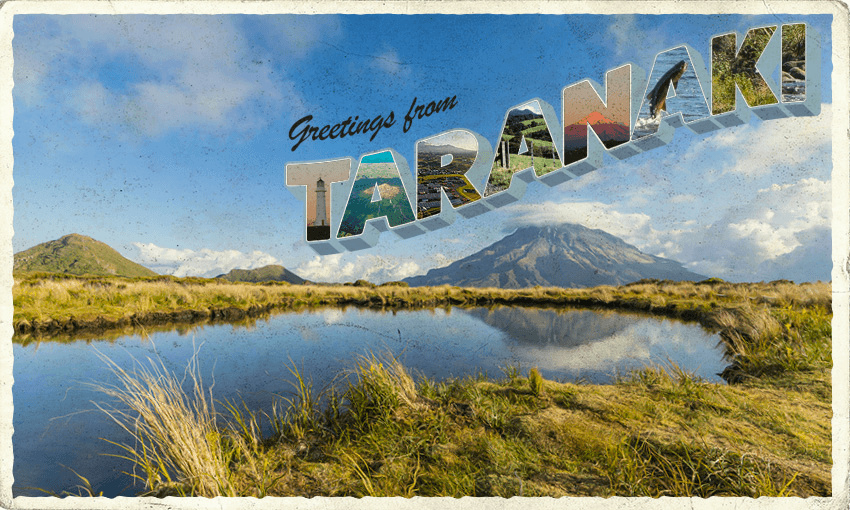With its snow-capped mountain, black sand beaches and rich arts culture, Taranaki is a region absolutely bursting with hidden gems. We’ve put together a list of all you need to know before you explore this stunning part of our backyard this summer.
If you’ve got friends or relatives visiting Aotearoa, top of their list should be sorting out their NZeTA (New Zealand Electronic Travel Authority). Head to the Immigration New Zealand website for all the details.
How do I love thee, Taranaki? Let me count the ways. I love Taranaki for its snow-capped maunga, it’s too-hot-in-summer black sand beaches, and for Yarrows Bread, the company that blessed the nation with one of the finest giant statues we’ll ever lay our eyes on. This is a place where you can surf and ski on the same day, and there’s something here for everyone, even if your idea of getting into the great outdoors is, like mine, lying on the beach drinking wine.
Taranaki is also home to New Plymouth (Ngāmotu), a frankly delightful city of nearly 60,000 people that’s often confused with Palmerston North. Forget your standard provincial city stereotypes, because New Plymouth punches above its regional weight in terms of arts and events. It’s a place small enough to keep that friendly small-town feel, but big enough to have shops open on a Sunday. Plus, you’ll never get stuck in traffic, no matter how hard you try.
Still not convinced? Here are some of the best gems in Taranaki’s crown.
The Best Single-Day Outing
If you’ve ever fancied climbing Mount Taranaki but aren’t sure you’ll have the oomph to get to the top, the the Pouakai Crossing could be the walk for you. It’s a shorter 4-5 hour day walk that’s part of the longer 19km Pouakai Circuit, Taranaki’s answer to the often overcrowded Tongariro Crossing. It’ll leave you breathless, but in a good way.
The Pouakai Crossing takes you across the lower slopes of Mount Taranaki, where you’ll be rewarded with incredible views over Taranaki and the central North Island. The best views are at the picturesque Pouakai Tarns, where you’ll see the maunga reflected perfectly in the waters of the lake. A photo here will give you at least four new followers on Instagram, so it’s definitely worth it.
The Best Way to Get Cultured
The Len Lye Centre is an iconic building in Taranaki, thanks to its gigantic walls made of shiny stainless steel. Once you’ve stopped looking at yourself in the mirrors, check out the internationally acclaimed Govett-Brewster Art Gallery and Len Lye Centre, home to the collection of kinetic sculptor and filmmaker Len Lye.
The Govett-Brewster has a variety of weird and wonderful exhibitions and displays, but it’s worth a visit just to check out Len Lye’s moving sculptures, which bend and wobble in mysterious and magical ways. Afterwards, be sure to check out the Wind Wand, an amazing 48 metre high Len Lye sculpture that bobs around on the New Plymouth foreshore.
The Best Hard-to-Find Eatery
The legendary White Hart Hotel was lovingly restored a few years ago, and is now one of New Plymouth’s most beautiful heritage buildings. There’s a hidden treasure tucked away inside called Snug Lounge, a Japanese inspired cocktail lounge that cleverly mixes a cosy old-school pub feel with fresh Asian fusion food.
Come for the Snug Lounge’s luxurious red velvet interior, stay for the amazing food and cocktails. It’s the perfect place to meet up with friends for a quiet drink or a pre-show meal, or better yet, grab a table in the covered courtyard with its open fire and fairy lights. The food is delicious, the service fantastic, and if you need me, I’ll be in a dark corner stuffing my face full of Butternut Pumpkin Wontons.
The Best Passion Project
Just outside Hawera in South Taranaki is Tawhiti Museum, a privately owned museum that’s been wowing visitors since the 1990s. Former art teacher Nigel Ogle’s passion for Taranaki is so strong that he’s created this award-winning museum about the region’s history, with all the models and displays handmade on site by Nigel himself.
Tawhiti Museum is full of surprises. An old dairy factory has been transformed into a series of themed galleries that bring Taranaki’s past to life, and visitors can ride the Tawhiti Bush Railway or check out the Farmpower Hall filled with vintage machinery. Best of all is the Traders and Whalers exhibition, which was built with Weta Workshop and takes visitors on an underground boat ride through an exhibition about early encounters between Māori and Pākeha in Taranaki. A boat ride, in a museum? Now I’ve seen it all.
The Best Fest
WOMAD is an incredible three day international festival of music, arts and dance, held each March in the Bowl of Brooklands and Brooklands Park. It’s a big deal in Taranaki, and since WOMAD began in New Plymouth over 15 years ago, the festival has welcomed more than 1000 artists from 100 different countries. Each year over 12,000 visitors travel to Taranaki to attend.
WOMAD is a magical celebration, with musicians and performers from around the globe coming together to perform. There’s an uplifting atmosphere of peace and unity around the park, and the festival is filled with a hugely diverse mix of music and people. You’re guaranteed a good time, you’d be (wo)mad to miss it.
For more from our ‘Top of the List’ series, check out the below:
Six great reasons to check out the Far North this summer
Five of Nelson’s must-try attractions
Five ways to fall in love with the Coromandel
A starter’s guide to summering in Central Otago
This content was created in paid partnership with Immigration New Zealand. Learn more about our partnerships here.


